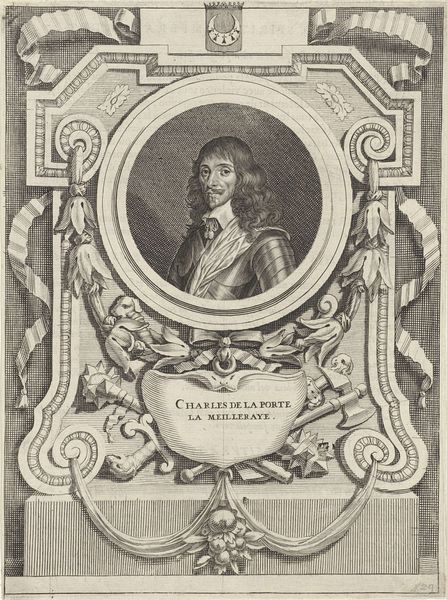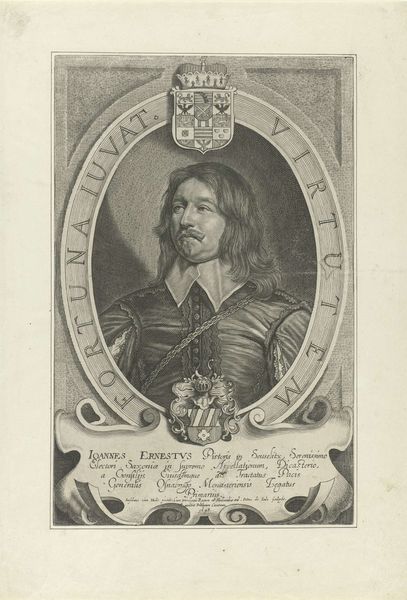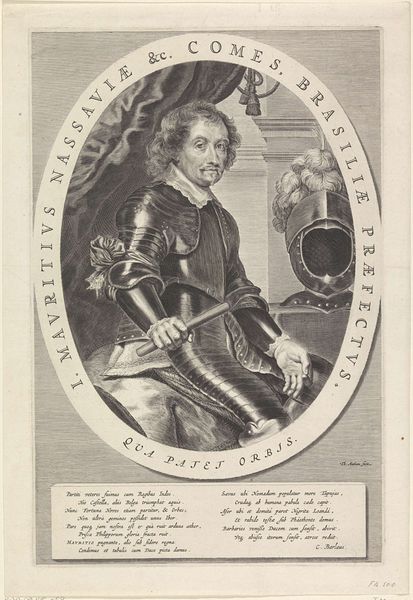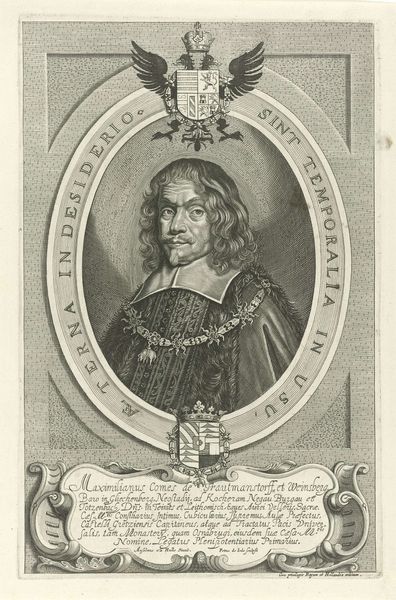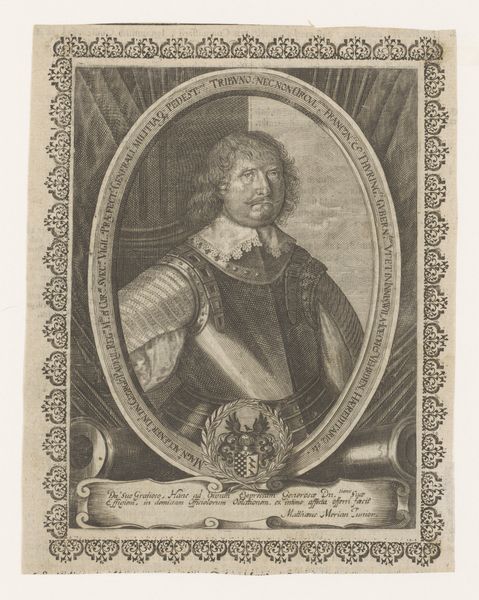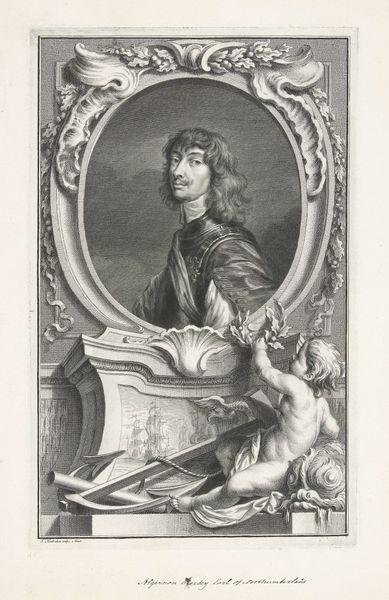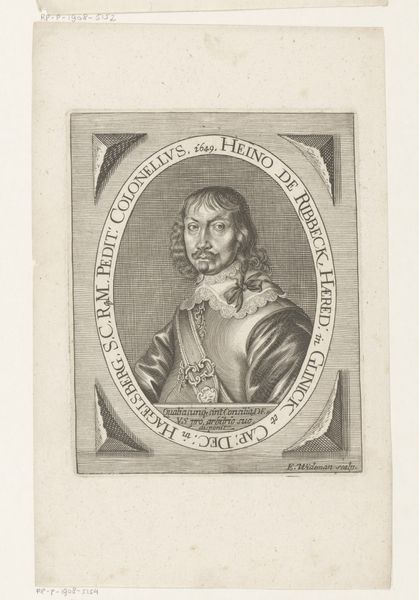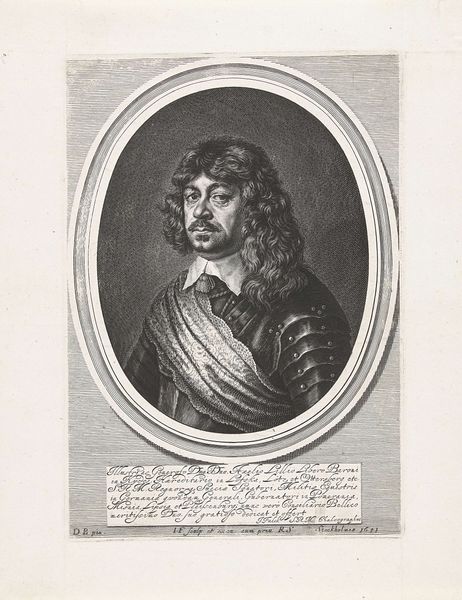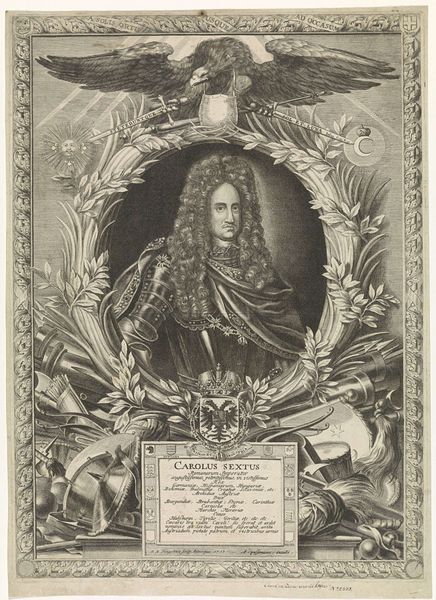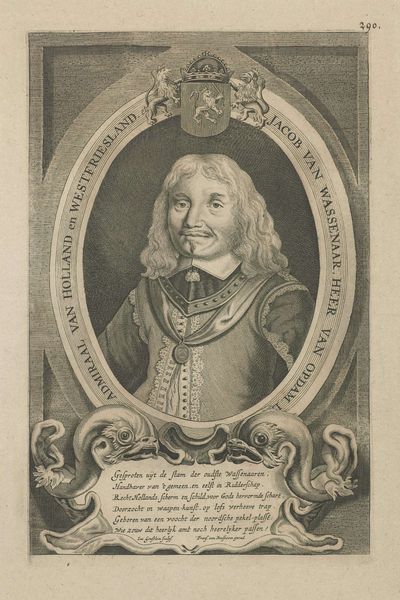
print, engraving
#
portrait
#
baroque
# print
#
old engraving style
#
pencil drawing
#
line
#
engraving
Dimensions: height 232 mm, width 171 mm
Copyright: Rijks Museum: Open Domain
Editor: Here we have Jeremias Falck's "Portret van Johann Ulrich von Wallich," an engraving dating from between 1662 and 1677. It has a formal, almost austere quality to it. How do you interpret this work, especially considering the context of its creation? Curator: That's a perceptive observation. This portrait exists within a web of power and identity in 17th-century Europe. Johann Ulrich von Wallich held a position of influence, as evidenced by the heraldry. The very act of commissioning a portrait was a statement of social standing, participating in the visual language of power. We have to consider the role of portraiture within these aristocratic networks, what image were they projecting, and who were they projecting to? Editor: So the portrait isn't just about capturing likeness but conveying social status. Curator: Precisely! The details, from the elaborate collar to the Latin inscriptions, are loaded with meaning. Consider the visual codes that construct his masculinity. Does he embody power? Confidence? What’s Falck's contribution to this narrative? How might his own socio-political position have informed his portrayal of von Wallich? Editor: I didn’t consider Falck's role. Now that you point it out, I'm wondering what that subtext could reveal about social mobility and the artist’s place within the aristocratic structures of that time. Curator: Exactly. It is through the relationship between sitter and artist that we see a multi-layered narrative start to emerge, unveiling both historical and social insight. Editor: This gives me so much to think about regarding power, image, and representation within social circles! Curator: Indeed. By considering these interconnected threads, we can move beyond surface appearances and gain a richer understanding of the historical and cultural context.
Comments
No comments
Be the first to comment and join the conversation on the ultimate creative platform.

